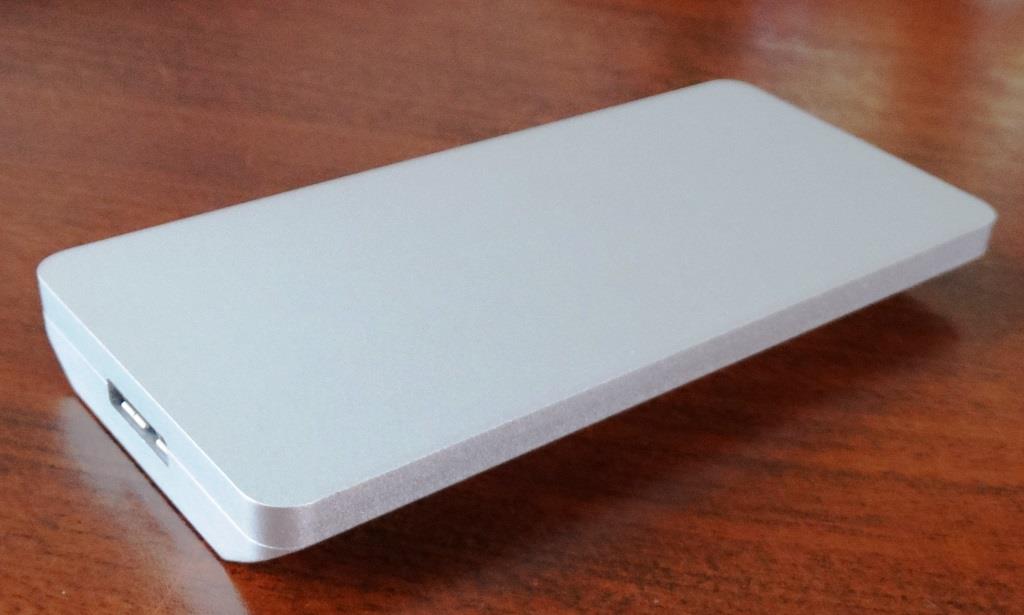External storage solutions are all the rage as of late and they are reaching performance and capacity heights that we have never seen before. Yesterday, we spoke of technology advancing to the point that we could carry our entire computing environment with us and boot it from any PC and today, we can do that with both Windows and Mac systems.
To be useful though, external storage needs to have a few characteristics that we still hasn’t become the norm. USB 3.0 is a must as trying to work on a USB 2.0 system might be cognizant of trying to wade through a thick pool of mud and having an SSD present in the device is key to the performance USB 3.0 speaks to, albeit Thunderbolt would be ideal but has yet to really become mainstream. As much as many not consider it, looks also play a large part and that leads us right into our analysis of the OWC Envoy Pro 240GB external storage SSD that we are examining today.
The OWC Envoy Pro is constructed of a very solid aluminum build and machined to perfection. It measures 4.5″ long x 2.12″ wide x .43″ high and is a very attractive silver color similar to that of Mac products.
The Envoy Pro is by far one of the top looking products we have seen to date and is shipped with a black cloth pouch that matches the quality of the device, along with the USB 3.0 (micro-B) to USB 2.0 cable that connects to the computer.

 The Envoy Pro is technically more than an external SSD case and the beauty of this device lies within. Although it can be purchased without internal storage (for those who have already upgraded their Mac and have the stock SSD lying around), it can also be purchased with the 240 or 480GB capacities of the OWC Aura Pro 6G SSD installed, the Aura Pro 6G of which we had reviewed previously and granted our coveted Editor’s Choice Award.
The Envoy Pro is technically more than an external SSD case and the beauty of this device lies within. Although it can be purchased without internal storage (for those who have already upgraded their Mac and have the stock SSD lying around), it can also be purchased with the 240 or 480GB capacities of the OWC Aura Pro 6G SSD installed, the Aura Pro 6G of which we had reviewed previously and granted our coveted Editor’s Choice Award.
The Aura Pro is ‘LSI SandForce Driven’ and contains the SF-2281 flash storage processor, theoretically allowing transfer speeds up to 500MB/s. As well, this SSD contains eight modules of unmarked tier 1 synchronous NAND flash memory for a total of 256GB RAW capacity on board.

 16GB of memory is retained for over provisioning and firmware needs, reducing the drive to its advertised 240GB. Once formatted, the end user available capacity is 224GB which is typical of all SF based 240GB SSDs. At one time, some thought that the lower capacity SF based SSDs might be a bit prohibitive, however, an understanding that this retained volume actually results in an increased endurance and sustained performance has ensured an excellent reputation and great sales for SF based SSDs.
16GB of memory is retained for over provisioning and firmware needs, reducing the drive to its advertised 240GB. Once formatted, the end user available capacity is 224GB which is typical of all SF based 240GB SSDs. At one time, some thought that the lower capacity SF based SSDs might be a bit prohibitive, however, an understanding that this retained volume actually results in an increased endurance and sustained performance has ensured an excellent reputation and great sales for SF based SSDs.
Something a bit amusing….. As reviewers, we get so used to the standard configuration of 8 or 16 modules of memory on one side of the PCB that this configuration of 4 modules actually stalls are thinking and has us questioning… Is that right?
 The SSD Review The Worlds Dedicated SSD Education and Review Resource |
The SSD Review The Worlds Dedicated SSD Education and Review Resource | 

Very strange that USB 2.0 would make the 4K result so much slower compared to the 4K results on USB 3.0
Theoretically, 30 MB/s at 4K should be no problem with USB 2.0 either. How can we explain this behaviour ? Maybe the bridge chip used is at fault ?
I still think 4K at speeds of 30 MB/s through USB 2.0 should be possible provided the underlying SSD supports those speeds.
Excellent review !